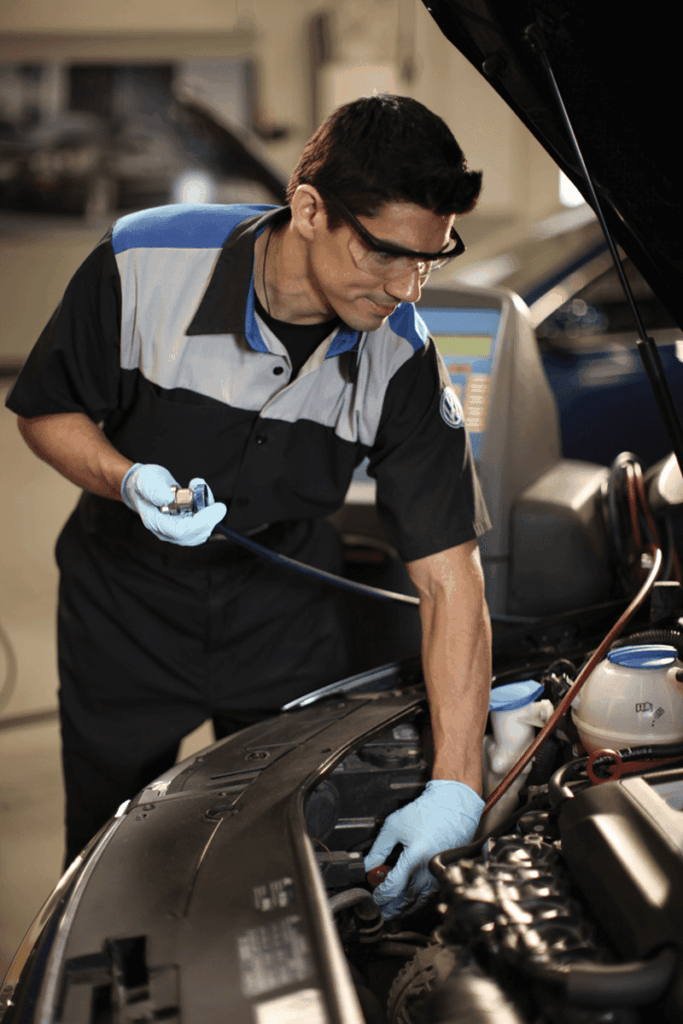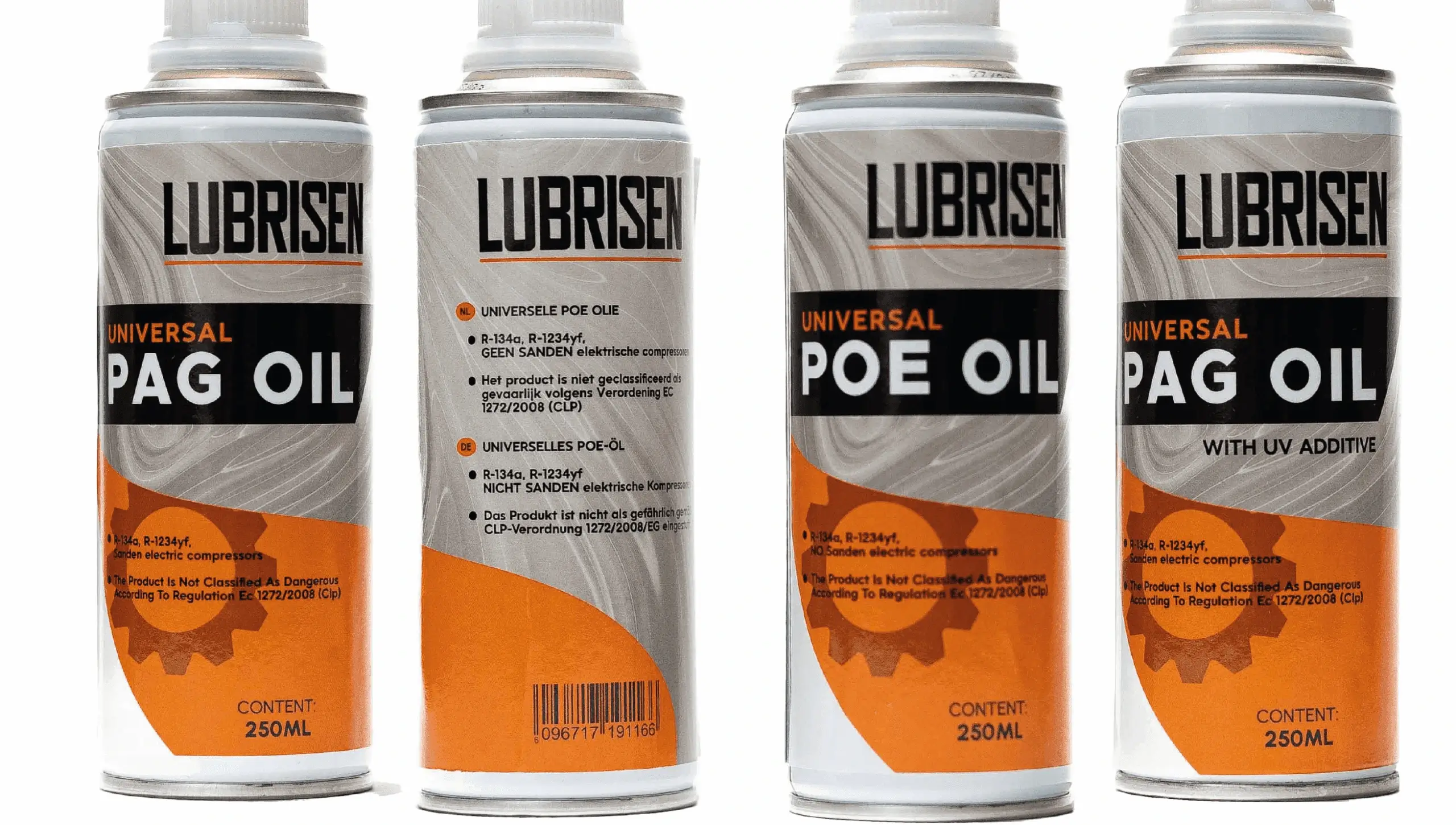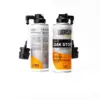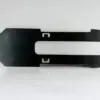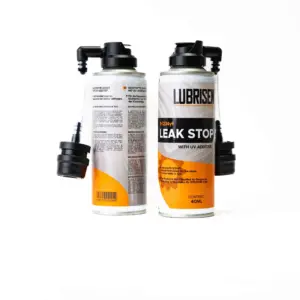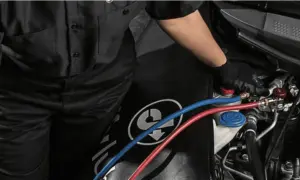As a technician, you know that choosing the right oil and fluids is essential for a properly functioning air conditioner. But what exactly are the differences between PAG and POE oil, and when do you use UV fluid? Let’s take a closer look at the details.
PAG Oil: The Standard for Modern Air Conditioners
- Most common: PAG oil is the most widely used oil in modern air conditioning systems, especially in passenger cars and light commercial vehicles that operate with the refrigerant R134a.
- Hygroscopic: PAG oil has a strong affinity for moisture. This means it quickly absorbs moisture from the air. When working with PAG oil, it is crucial to work quickly and carefully to avoid contamination. For example, do not leave oil bottles open and close the air conditioning system as soon as possible after maintenance.
- Different viscosities: PAG oil is available in different viscosities (PAG 46, PAG 100, etc.). The correct viscosity depends on the specific air conditioning system and type of compressor. Always consult the manufacturer’s specifications to choose the right oil.
- Do not mix with other oils: PAG oil must not be mixed with other types of oil, such as POE oil or mineral oil. This can cause serious damage to the air conditioning system.
- Essential for the compressor: The correct PAG oil provides lubrication and cooling for the compressor, which is essential for its lifespan and efficiency. Using the wrong oil can lead to excessive wear, noise, and ultimately compressor failure.
POE Oil: The Versatile Option
- Universal: POE oil is compatible with both older (R12) and newer (R134a and R1234yf) refrigerants. This makes it a good choice for hybrid and electric vehicles, which often use the newer R1234yf refrigerant, as well as for some older models that still use R12.
- Less hygroscopic: POE oil is less sensitive to moisture than PAG oil, which makes handling it a bit easier. Although caution is still necessary, you don’t need to worry as much about moisture contamination as with PAG oil.
- More stable at high temperatures: POE oil is generally more stable at high temperatures than PAG oil. This can be an advantage in systems operating under harsh conditions.
- Be careful with retrofit: If you’re converting a system from R12 to R134a, it’s important to thoroughly remove all old mineral oil before adding POE oil.
- Also crucial for the compressor: Just like with PAG oil, using the correct POE oil is vital for the compressor’s lifespan and performance..
UV Fluid: The Leak Detective
- Leak detection: UV fluid is added to the refrigerant to detect leaks. With a UV lamp, you can see the fluorescent fluid at the spot where the system is leaking, even with very small leaks that are difficult to find using other methods.
- Compatible: UV fluid is compatible with both PAG and POE oil, so you can use it in almost any air conditioning system.
- Preventive: Some technicians add a small amount of UV fluid during every service, so that any future leaks can be quickly detected—even if there are no current problems.
Which oil for which vehicle?
- Passenger cars and light commercial vehicles (R134a): Usually PAG oil, according to the manufacturer’s specifications.
- Hybrid and electric vehicles (R1234yf): Often POE oil, due to compatibility with this refrigerant.
- Older models (R12): Check the specifications, but POE oil is often a safe choice, provided all old mineral oil has been removed.
- Retrofit from R12 to R134a: POE oil, after thorough removal of the old mineral oil.
Conclusion
Choosing the right oil and using UV fluid are crucial steps for a successful air conditioning service. By understanding the differences between PAG and POE oil, and knowing when to use UV fluid, you can ensure that your customers’ air conditioners continue to perform optimally and that leaks are detected and repaired quickly and efficiently. Using the correct oil is not only important for the proper functioning of the air conditioner but also for the lifespan of the compressor, a costly component you want to protect..

